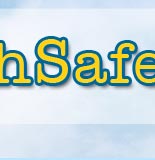|
Peer Warning Program
Peer Warning Program | Model School Protected Communication Policy
In almost all known instances of school violence, the perpetrator has conveyed his violent intentions to peers or peers have become cognizant of possible danger. As the following examples illustrate, peers’ sharing of such information with adult authorities has resulted in the avoidance of violent acts.
Ft. Collins, Colorado
On the second anniversary of the Columbine shootings, a 14-year old girl and her friend heard three male classmates describe how they planned to re-enact the shootings. They showed drawings of how the perpetrators would block the exits to keep students from escaping. The girls called the police. After their arrest, police found detailed plans including graphic drawings of bodies strewn down a school staircase. Three guns and a propane tank were confiscated. The three potential felons had been ostracized, and they made threats and comments in an attempt to scare kids. Unfortunately, no one had taken the boys' threats seriously until a classmate reported the group.
Hoyt, Kansas
An anonymous tip from a student came in via the school's hot line with information about a plot by three high school students. The three students were arrested. At their homes, police found an AK-47 assault rifle, 400 rounds of ammunition, bomb-making materials, bomb recipe books, a drawing of the school's floor plan with spots marked for the explosives, and white supremacist and Nazi drawings.
Mesa, Arizona
A 14-year-old student told classmates he planned to bomb and shoot three students and a teacher. The police received a tip from the mother of another student whom the suspect had contacted to find out where to buy the chemicals for a bomb. The boy showed police a list of three students and one teacher that he wanted to kill at the school. Police questioning revealed that he had informed at least three classmates about what he planned. He had warned them that when he picked a date, they should miss school. He told the police officer he was upset that other students had picked on him and that he wanted revenge.
In many instances, peers who discover information about possible violent acts do not share it with authorities. Some of the factors that may contribute to students non-communication of such threats include:
- Fear for their own safety (retribution from perpetrator or from his friends)
- Peer pressure to remain silent rather than report perceived threat to an adult
- Fear of not being believed
- Belief that no one will act on the information
- Sense of embarrassment or shame of knowing about the violence
- Fear of being incriminated in some way
- Fear for the well-being of the aggressor or some other party
- Concern that an unfair disciplinary action will be taken against the perpetrator
- Sense of hopelessness and lack of knowledge about where to obtain help
Next Page
|







